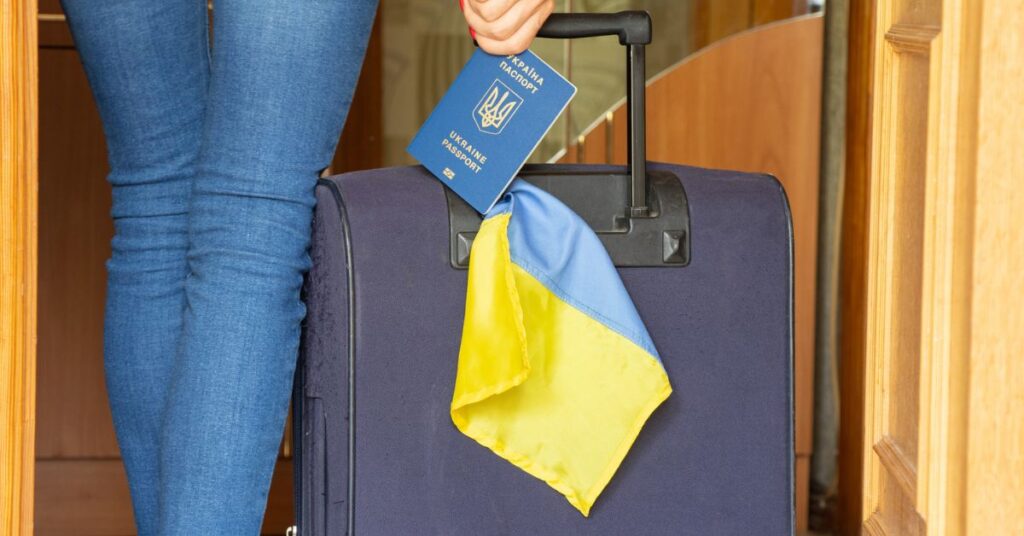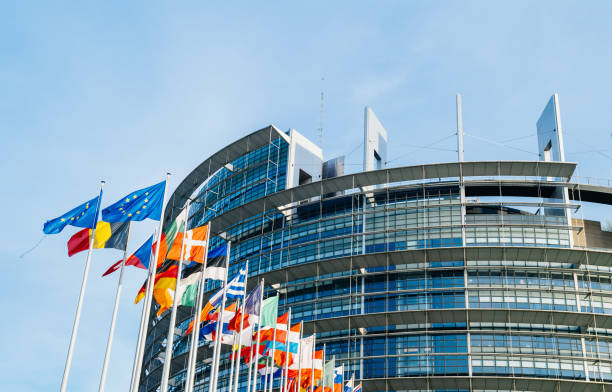
The Council of the European Union has adopted a recommendation that outlines how to end temporary protection for displaced Ukrainians. It also gives guidance on moving them to other residence permits or returning to Ukraine once it is safe.
This decision comes after the extension of temporary protection until March 4, 2027, and while the EU continues to provide financial, military, and humanitarian support to Ukraine during Russia’s war of aggression.
Lead decision
On September 16, 2025, EU ministers approved a recommendation asking member states to prepare for ending temporary protection.
The plan focuses on helping people reintegrate in Ukraine in a sustainable way and on giving coordinated support to those who stay in the EU under new residence permits.
Kaare Dybvad Bek, Denmark’s Minister for Immigration and Integration, said the goal is to “ensure that the return to Ukraine takes place gradually and with a focus on sustainable reintegration in the communities.”
Extension of temporary protection
On June 13, 2025, EU interior ministers unanimously agreed to extend temporary protection for over four million displaced Ukrainians until March 2027.
Launched in March 2022, the program was meant to give quick protection and ease the strain on national asylum systems. It provides residence, work, education, healthcare, and social support rights in all EU member states.
Polish Interior Minister Tomasz Siemoniak said that the extension sent “a signal to displaced people from Ukraine that it is not necessary to apply for asylum” during this time.
Transition measures
The Council’s recommendation, adopted in September 202,5 sets out several steps for member states:
- Residence Statuses: Countries should help Ukrainians move to national residence permits, such as those based on work, study, or family ties, if they qualify.
- EU Legal Pathways: Eligible people may apply for EU-wide residence permits for skilled workers, students, and researchers, but they cannot keep temporary protection at the same time.
- Exploratory Visits: Displaced persons should be allowed to visit Ukraine to check conditions before deciding whether to return permanently.
- Voluntary Return Programs: Member states should create structured voluntary return schemes with Ukraine. Returns should happen gradually over about a year, while people keep their temporary protection rights during this time.
- Special Provisions: Families with children in school can stay until the school year ends, and people with special needs may remain until Ukraine can provide proper support.
The recommendation also proposes setting up Unity Hubs in member states. Funded by EU programs, these hubs would give displaced Ukrainians information on residence options, jobs, and reintegration support.

Scale of displacement
Since March 2022, more than 4.3 million Ukrainians have taken refuge in the EU under temporary protection.
Activated for the first time in EU history after Russia’s full-scale invasion, the program has let displaced people use essential services without having to file individual asylum claims.
EU financial, humanitarian support
Council data shows that since February 2022, the EU and its member states have given Ukraine €172.5 billion in support. Of this, €88.6 billion went to financial, economic, and humanitarian aid, while €63.2 billion covered military assistance.
The Ukraine Facility, launched in March 2024, offers up to €50 billion in grants and loans from 2024 to 2027 for reconstruction and modernization. By August 2025, €31.3 billion had already been allocated through this program.
Humanitarian aid has reached €4.2 billion, funding food, healthcare, emergency education, and civil protection. The EU has also delivered nearly 156,000 tonnes of material aid and transferred more than 4,500 patients to European hospitals.
Military, security assistance
The EU has backed Ukraine’s defense through the European Peace Facility and training programs. Since November 2022, the EU Military Assistance Mission has trained over 80,000 Ukrainian soldiers.
In June 2024, joint security commitments promised long-term support to help Ukraine withstand destabilization and prevent future aggression.

Reconstruction, connectivity
Reconstruction is being coordinated through the Ukraine Facility and an international donor platform set up in 2023.
EU support has focused on Ukraine’s energy sector, which lost 70 percent of its power generation capacity to Russian attacks. Funds are being used to repair infrastructure, expand local power production, and increase electricity imports from the EU.
Starting in 2026, Ukrainians in the EU will also benefit from EU mobile roaming rules, removing extra charges for calls and data between Ukraine and the Union.
War crimes accountability
The EU has supported investigations into war crimes and crimes against humanity in Ukraine. In May 2025, it endorsed a Special Tribunal for the Crime of Aggression to prosecute senior Russian political and military leaders.
Eurojust hosts the International Centre for the Prosecution of the Crime of Aggression in The Hague, which helps build cases.
Protecting children
Since the war began, hundreds of thousands of children have fled Ukraine. The EU has allocated €100 million for education, mental health support, and protection.
It has also provided 1.5 million textbooks and over 380 school buses.

Border shifts and the traveler’s experience
The extension and planned phase-out of temporary protection for Ukrainians overlap with upcoming EU border changes.
Starting October 12, 2025, the Entry/Exit System (EES) will record the entry and exit of non-EU nationals at Schengen borders, fully in place by April 2026. It will replace passport stamps with digital records and help authorities track overstays.
For short-term visitors like tourists and business travelers, border checks should become faster through automation and self-service options.
From late 2026, the European Travel Information and Authorization System (ETIAS) will also apply to visa-exempt travelers to 30 European countries. About 1.4 billion people from 59 countries will need prior authorization for short visits, valid for up to three years.
ETIAS will not apply to Ukrainians under temporary protection but will matter once they move to other residence statuses or when protection ends.
For migrants with longer-term stays, the Council’s recommendation supports moving to residence permits based on work, study, or family ties.
Together, EES and ETIAS will make it easier to track visitors, temporary residents, and long-term migrants across the EU, reinforcing the difference between short-term travel and residence-based migration.
National policies in transition
The Council’s decision and recommendation also shape how EU countries handle immigration.
Extending temporary protection until 2027 secures immediate rights for millions of displaced Ukrainians, while the transition plan gives national authorities a framework to manage residence, access to work, and voluntary return.
Governments are expected to align these steps with new EU-wide systems. With the rollout of EES and ETIAS, border controls will tighten, and states will gain detailed data on entries and exits in the Schengen Area.
This will help them track overstays and guide future migration policies.
By linking residence permits, return programs, and reintegration with Ukraine, the EU is pushing member states toward a more unified approach.
While countries can still issue national permits, the recommendation lowers the risk of fragmented policies and prepares for a gradual shift from emergency protection to long-term migration management.
Path forward for displaced Ukrainians
The EU will keep temporary protection in place until 2027 and is setting up a plan for what comes after. This gives millions of Ukrainians who fled the war both security now and clear options for the future.
They can remain under EU protection, apply for other residence permits, or return to Ukraine when it is safe. By combining short-term safety with long-term planning, the EU is helping people rebuild their lives while also supporting Ukraine’s recovery.
For many, the key question remains: how can Europe protect displaced Ukrainians today while preparing for their future beyond 2027?
